
Another fine lunch for a lazy Sunday. This time Cotto Salami with veg and Colby, banana, red and green diced Hatch Chili on top of feta, carrot, celery sticks with sliced red pepper on the salad, cantaloupe, left over grilled onions and peppers, Dill, B&B and jalapeno pickles with brie on the watermelon, black grapes, raspberries and the best half of a nectarine sliced we have ever tasted. Eaten by the pool with a nice limoncello made with diet squirt.
Ever since we first saw Andy’s commercial fresh yeast version of this bread here:
http://www.thefreshloaf.com/node/29164/june-baking-restricted
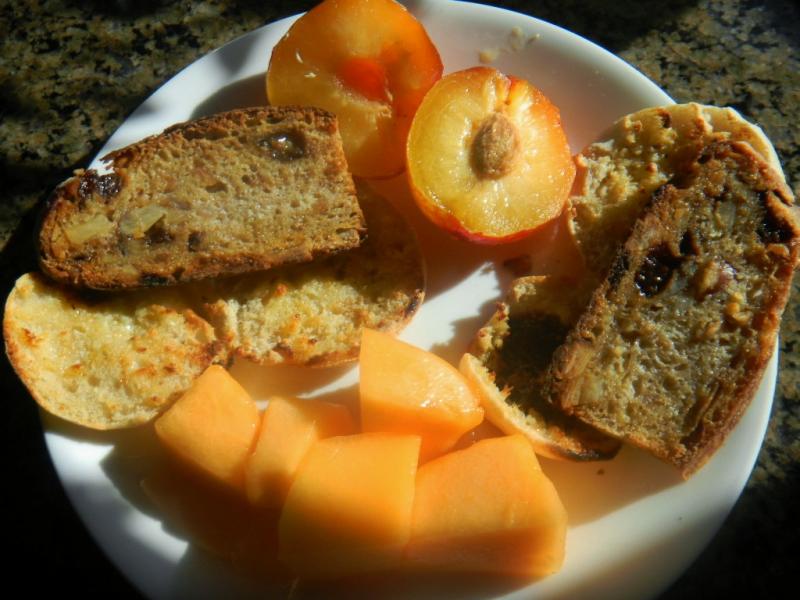
Andy's Brazil Nut and Prune Bread made for a delicious toasted breakfast with kjknits English Muffins and butter, a yellow plum and cantaloupe.
We have been wanting to give it a go with natural yeast like he does at home. Andy mentioned when he bakes at home it is invariably a sourdough. I have seen him note that he uses a white levain for this bread at home but have not seen a recipe using it. We only use natural non commercial YW and SD levains and finally decided to try to this bread using SD levin.
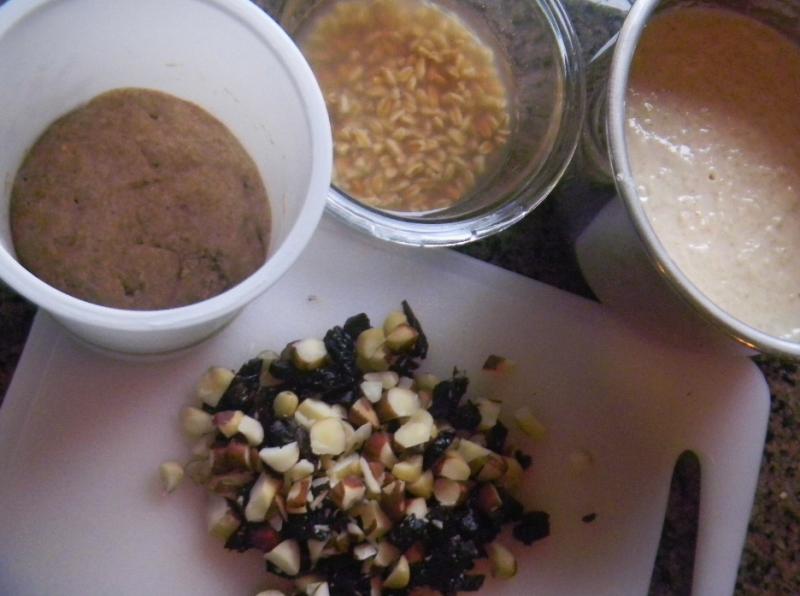

Since this bread has 35% whole wheat in it we decided to go with a WW Desem starter too instead of the white – which we don’t keep refrigerated anyway. We wanted to try to keep to Andy’s overall formula, 25% whole wheat grain and the rest breads flour, 20% levain, 12.5% each toasted Brazil nuts and prunes and 68% hydration but ended up straying pretty far away in the end because of error in our formula spreadsheet that made the dough flour add up to 100g of more flour than what was really there so…

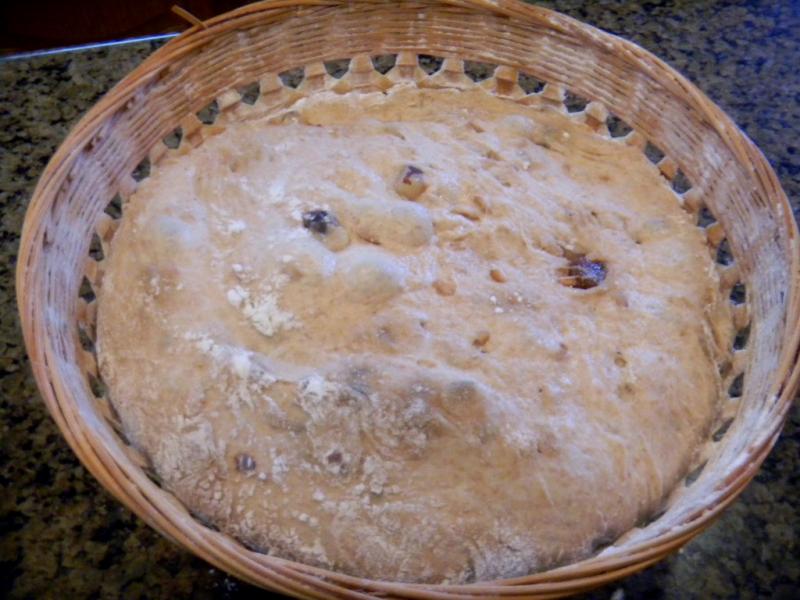
Not a huge rise when proofed, probabkly could have been longer?
We inadvertently upped the whole grains to 35% all whole wheat and upped the hydration to 85% ciabatta range which might open the crumb some. We hoped it would not flop when it came out of basket or stick to it. We upped the prunes and nuts to 20% each too. Andy’s salt for this bread is less than 2% at 1.67% but our salt spiked to 2.33% and our Brazil nuts are roasted and salted so this might inhibit yeast growth and make one want to have beer or two with this bread.


Going in the oven This shot is in the oven after the DO bottom cloche was remved.
Andy’s recipe came in at 3,003 g and ours was less than a third of that including the scald that wasn’t in Andy’s formula. The scald was 40 g of WW berries because we like scalds or sprouts or both in our breads but didn’t have time for the 2 days it takes for sprouts to do their thing.
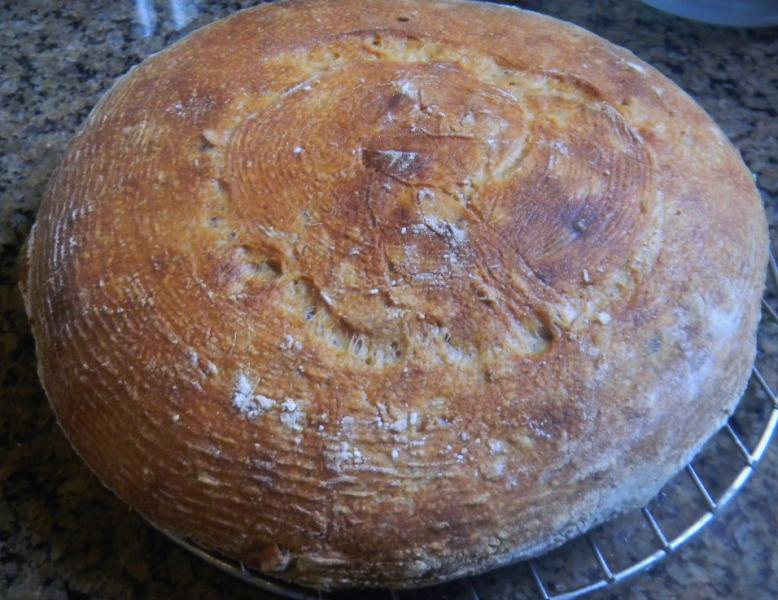
If you want to bake a loaf of Andy’s bread nearly exactly like I wanted to do all you have to do is add 100g of bread flour to the recipe below and you will have it close enough. Wish I would have done so.
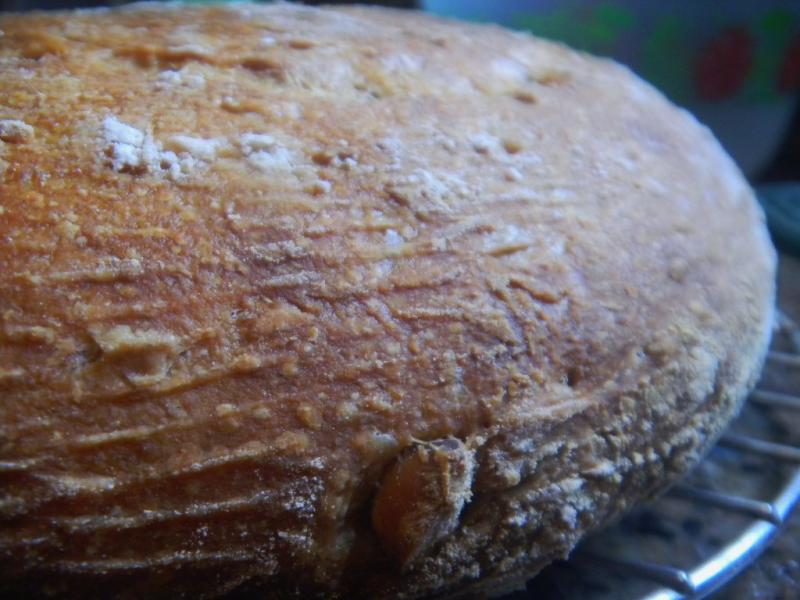
We also used our 3 stage levain build of (2) 4 hour and (1) 2 hour build. The levain had nicely doubled in 10 hours and was ready for use. We did not retard the finished levain in the fridge for 12 hours as we would normally. We held back 35 g of water and used the rest of the dough water to hydrate the flours and salt for a 10 hour autolyse while the levain was being built. We are starting to like long hydrations for dough flour.
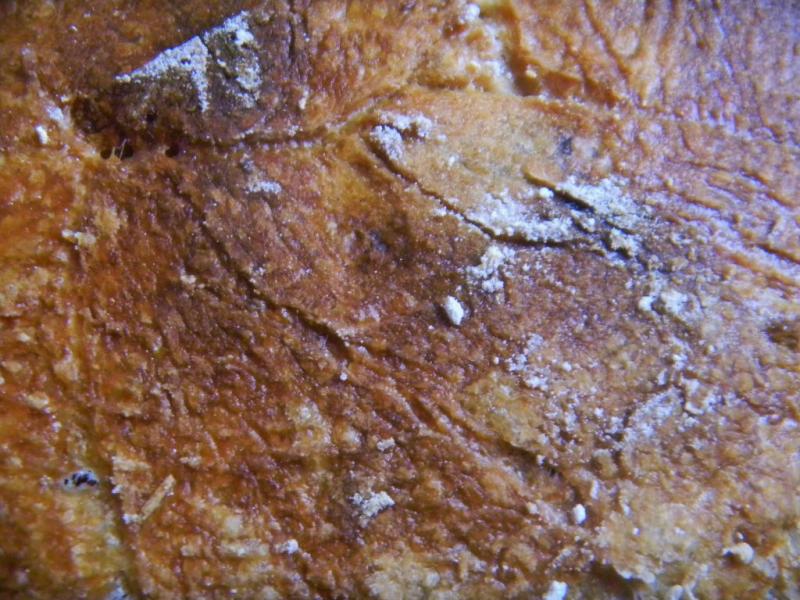
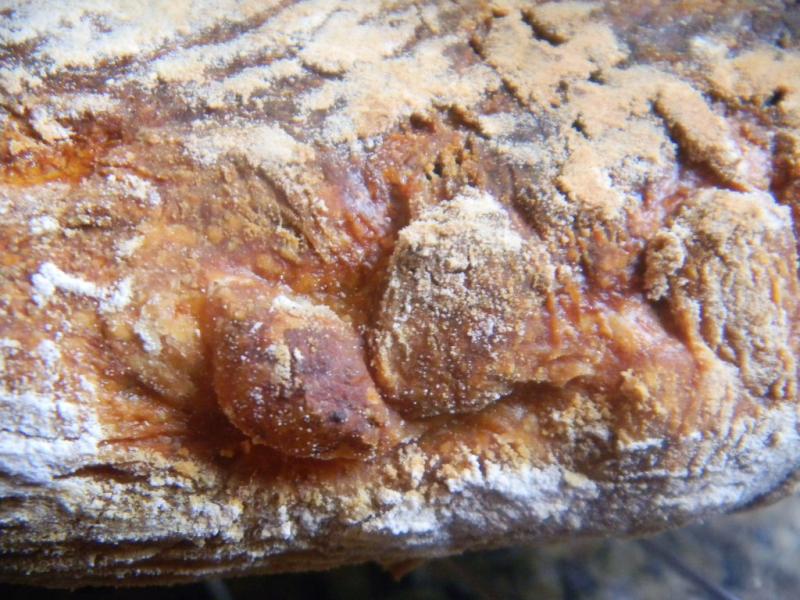
The 35 g of water that was held back from the autolyse was added to the levain to loosen it up and make it easier to mix into the autolyse. The mixing was done in the KA on speed 2 using the paddle for 4 minutes. We then switched to the dough hook and mixed for another 4 minutes on KA speed 2. We then moved it up to speed 3 for 4 minutes.
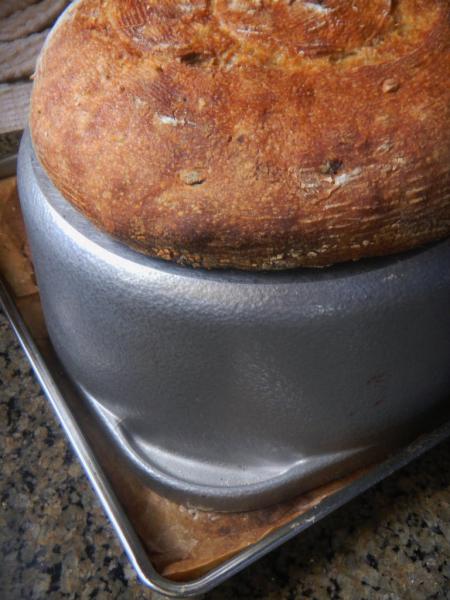
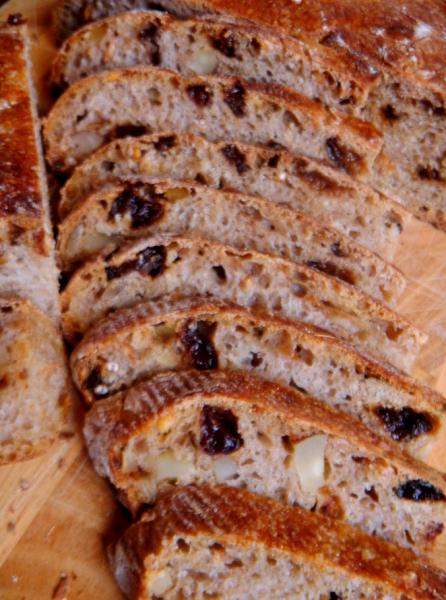
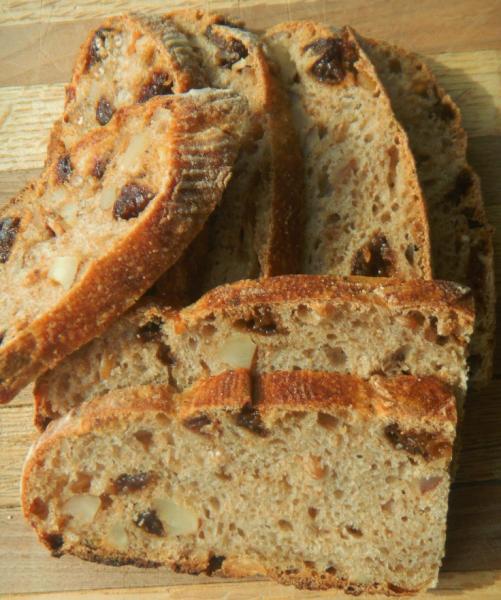
The dough was moved to a plastic covered oiled bowl for 10 minutes of rest. 5 sets of S&F’s (starting with 25 stretches with quarter turns going down 5 each time) were done on 10 minute intervals. The wheat berries, chopped medium toasted Brazil nuts and chopped prunes were added at the beginning of the 4th set and nicely incorporated by the 5th set.
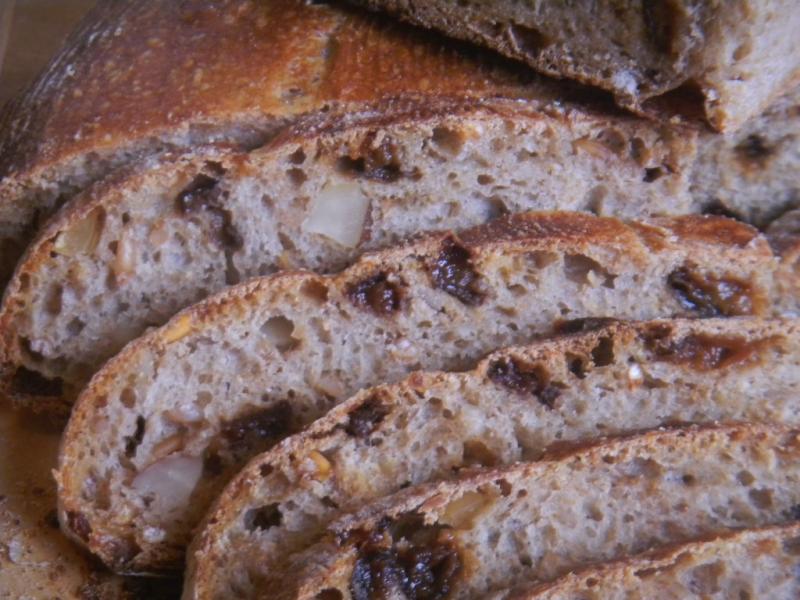
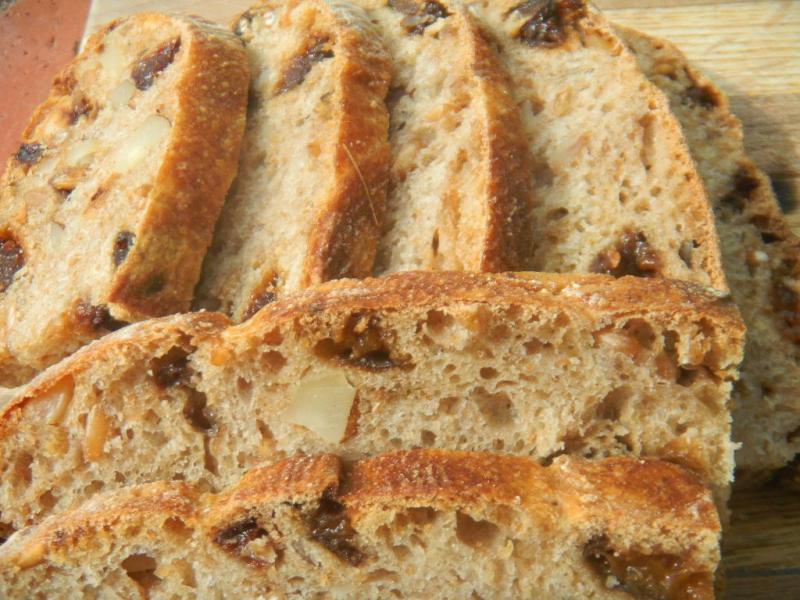
When the S& F’s were done the still slack and wet dough was fermented for 1 hour. When fermentation was complete, we took a portion of the dough to make a knotted roll which was placed in the center of the rice floured basket to make the center of the Chacon. The remainder of the dough was formed into a boule that was hand formed into a huge bialy shape (wish I had a picture of it) and placed pocket side down over the knotted roll to complete the Chacon.

The Chacon and basket were placed into a trash can liner and retarded overnight for 12 hours without any proofing at room temperature. We hoped the 4-6 hour short retard times we have had lately were due to the YW and since we didn’t have any YW this time, we thought we would make it 12 hours OK. But, the bread hardly rose in the fridge after 14 hours of retardation. We should have let it proof at room temperature for an hour before refrigerating. No worries.

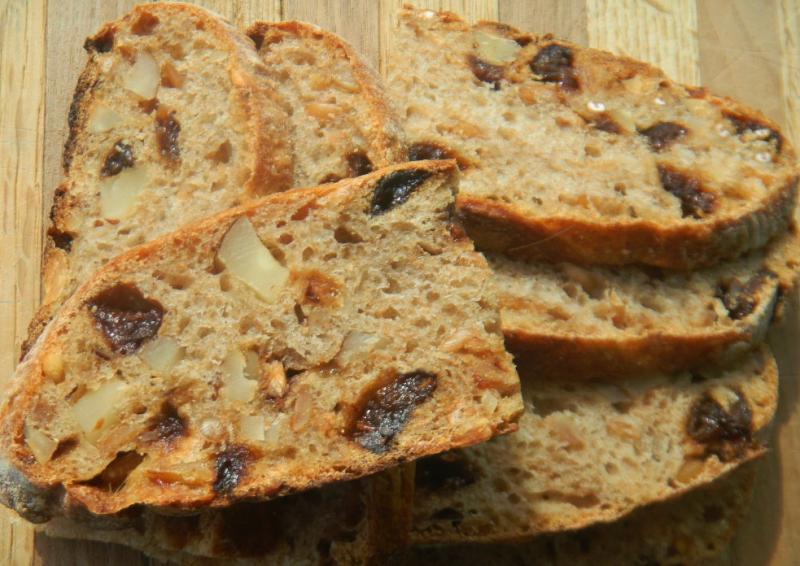
We took it out to warm up and see what it would do if it was not so chilly. In 2 hours we saw some activity with large bubbles on the top so then we put it back in the fridge. The biblical monsoon rain came and the back yard looked like a lake so some trenching with a hoe was required to get the water to drain away from coming in the back door.
A nice brie and Colby grilled cheese using this great bread with; raspberries, watermelon, cantaloupe, nectarine, pickles, banana, black grapes, salad with feta, pickles jalapeno and leftover veggies from last night's shimp kabobs.
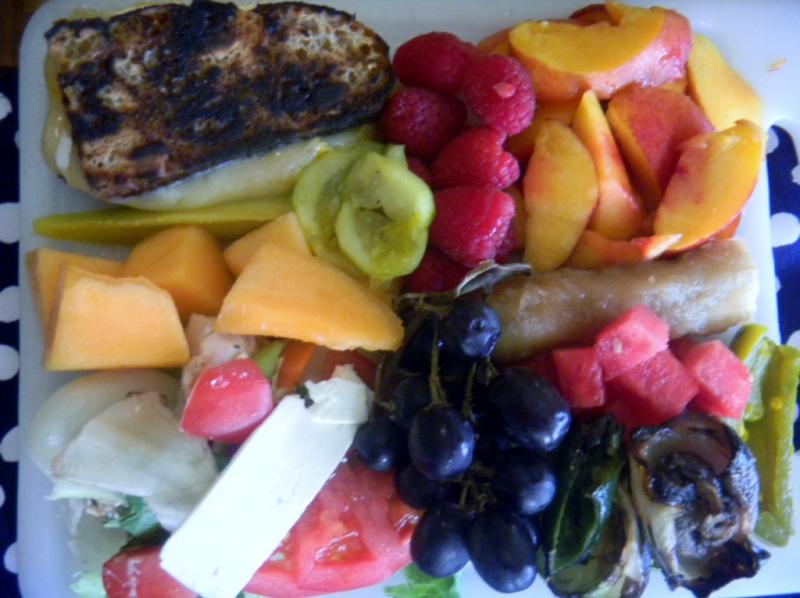
Retard complete and the dough nearly fully risen as it would be allowed to get, we fired up the mini oven to 500 F. The basket was upended onto parchment using the bottom of the mini’s broiler pan. No slashing is required for the Chacon. The bottom of the aluminum DO was placed over the Chacon and the whole shebang was put in the mini oven. The temperature was turned down to 450 F immediately and the bread baked covered for 20 minutes.
The cover was removed and the oven was turned down to 425 F baking with convection this time. It was baked until the internal temperature reached 208 F– about 15 minutes more while rotating the Chacon 90 degrees every 5 minutes to ensure even baking.
The oven was turned off the bread was left inside with the door open for 10 more minutes to crisp the skin before removing the bread to a cooling rack.
This is a fine bread that we like a lot. The mix of SD, WW, prunes and Brazil nuts is awesome and the taste plain delicious. Andy is really on to something here. It did bake baked up handsome. The crust coming out crusty and going to chewy as it cooled . It was fairly open, moist and slightly glossy (sorry no sun today for outdoor pix's) for all the add ins and whole grains. It was fantastic toasted with butter. The desem SD tang is there and we hope it gets stronger as it ages. We think it would be improved with a more open crumb with less hydration, 100g more bread flour and some YW. A 75% hydration variation might be really nice too. All in all, it is a fine bread and confirms why Andy bakes it often and sells it out regularly!
Thank's Andy for a fine formula the results in a wonderful bread - just the kind we like.
Andy's Brazil Nut and Prune Bread - 35% WW, Desem SD and WW Scald | | | | | |
| | | | | |
Mixed Starter | Build 1 | Build 2 | Build 3 | Total | % |
DesemSD Starter | 20 | 0 | 0 | 20 | 4.71% |
WW | 40 | 40 | 35 | 115 | 38.33% |
Water | 40 | 20 | 15 | 75 | 25.00% |
Total Starter | 100 | 60 | 50 | 210 | 70.00% |
| | | | | |
| | | | | |
Starter | | | | | |
Hydration | 68.00% | | | | |
Levain % of Total | 21.63% | | | | |
| | | | | |
Dough Flour | | % | | | |
Bread Flour | 280 | 93.33% | | | |
WW | 20 | 6.67% | | | |
Dough Flour Total | 300 | 100.00% | | | |
| | | | | |
Salt | 7 | 2.33% | | | |
Water | 270 | 90.00% | | | |
Dough Hydration | 90.00% | | | | |
| | | | | |
Total Flour | 425 | | | | |
Water | 355 | | | | |
T. Dough Hydration | 83.53% | | | | |
Whole Grain % | 34.12% | | | | |
| | | | | |
Hydration w/ butter | 84.71% | | | | |
Total Weight | 972 | | | | |
| | | | | |
Add Ins | | % | | | |
Scalded WW Berries | 40 | 13.33% | | | |
Butter | 25 | 8.33% | | | |
Brazil Nuts | 60 | 20.00% | | | |
Prunes | 60 | 20.00% | | | |
Total | 185 | 61.67% | | | |
Remember ,if you want to bake Andy's bread as he makes it and as I intended , add 100 g of bread flour to the fomula above. We love this bread for breakfast, lunch and dinner. It is a top 5'er for sure.